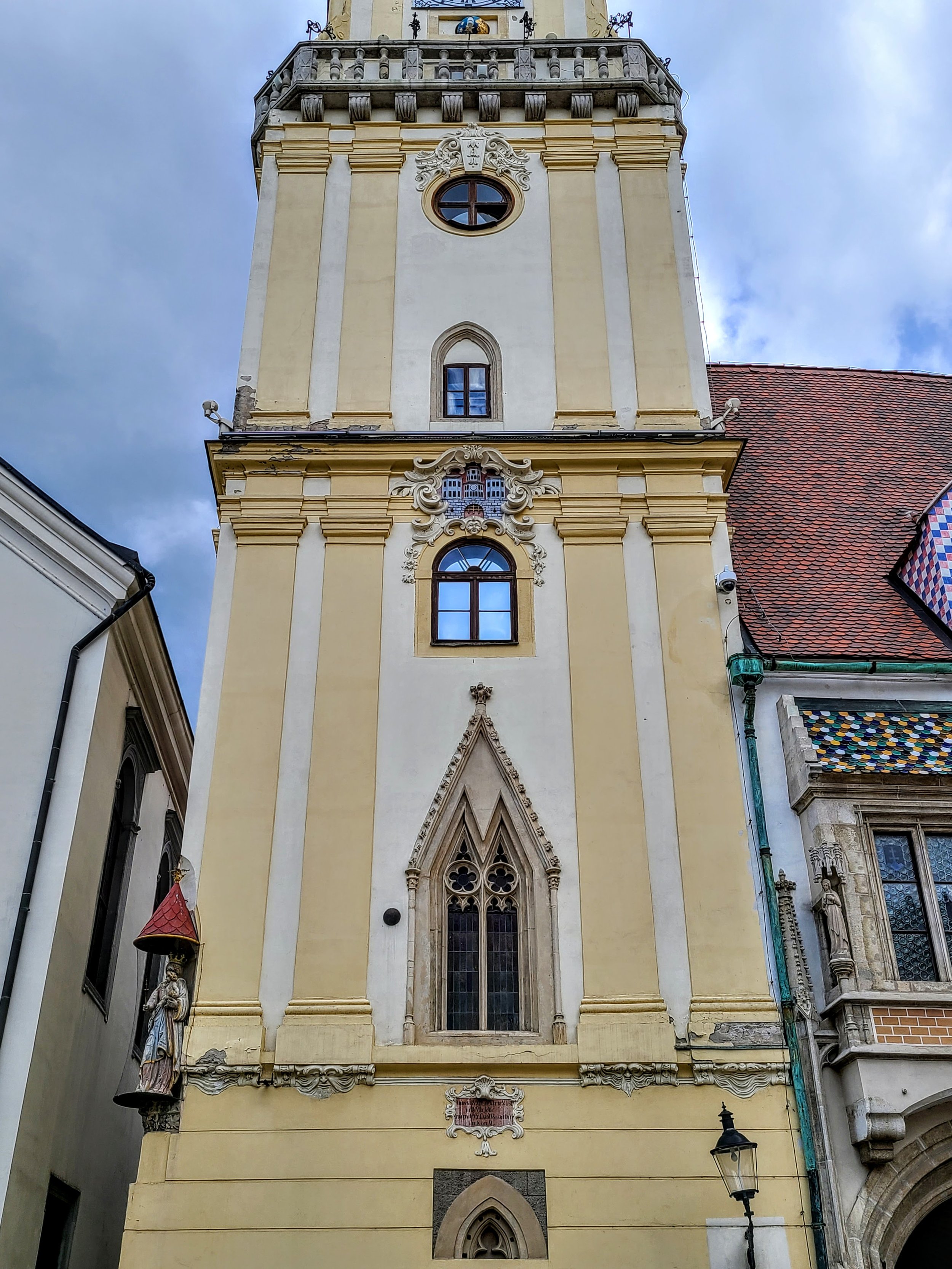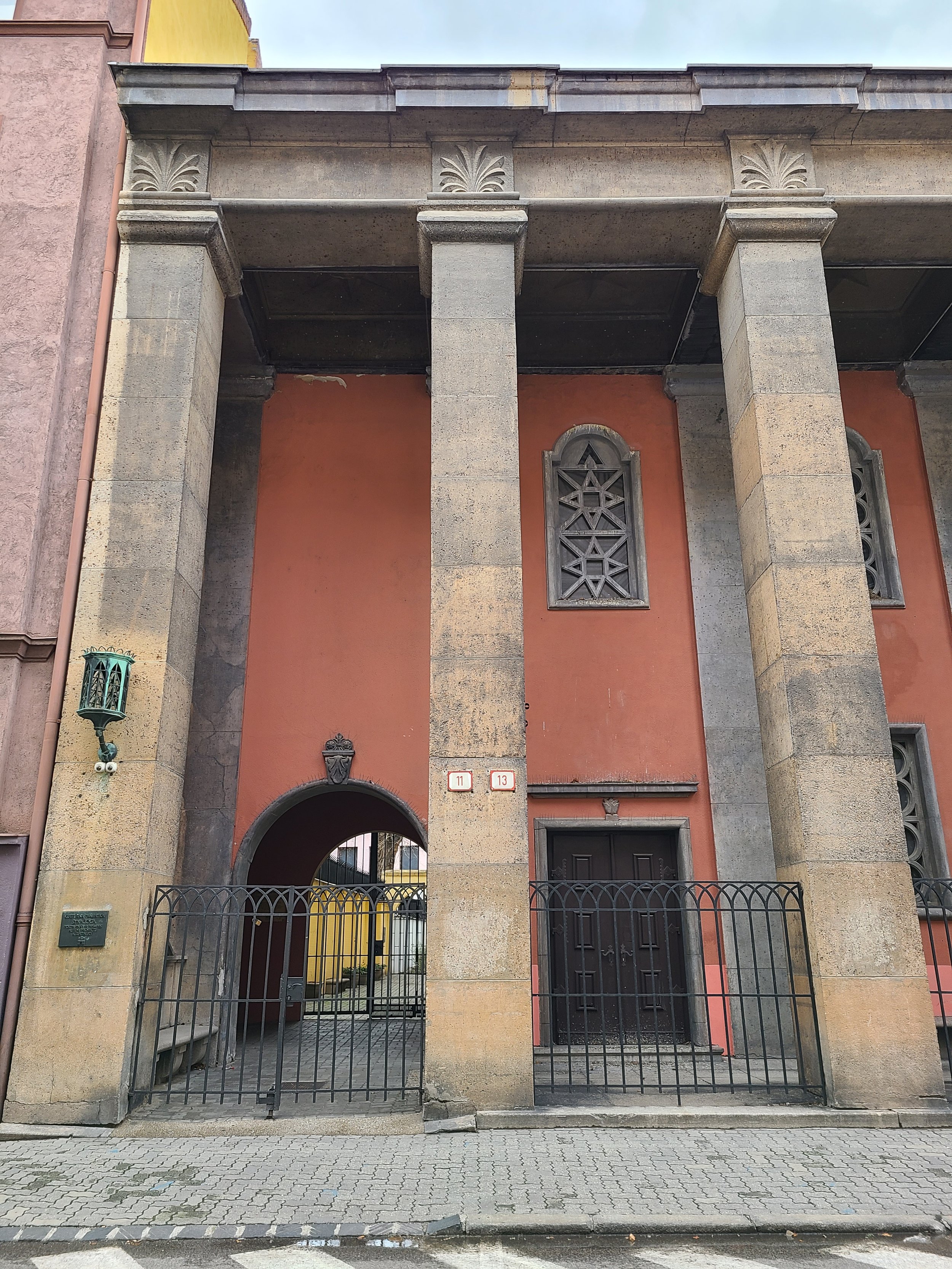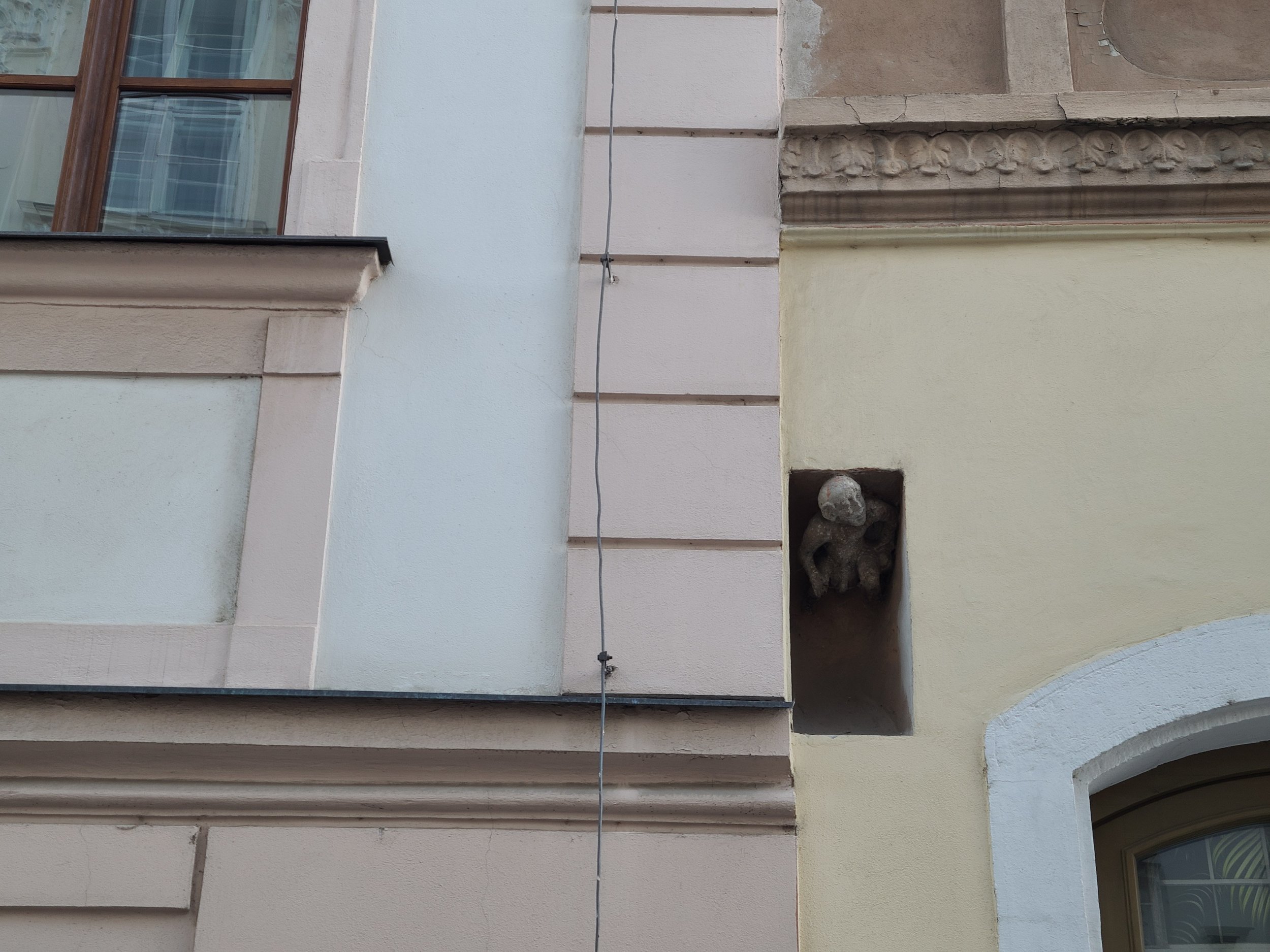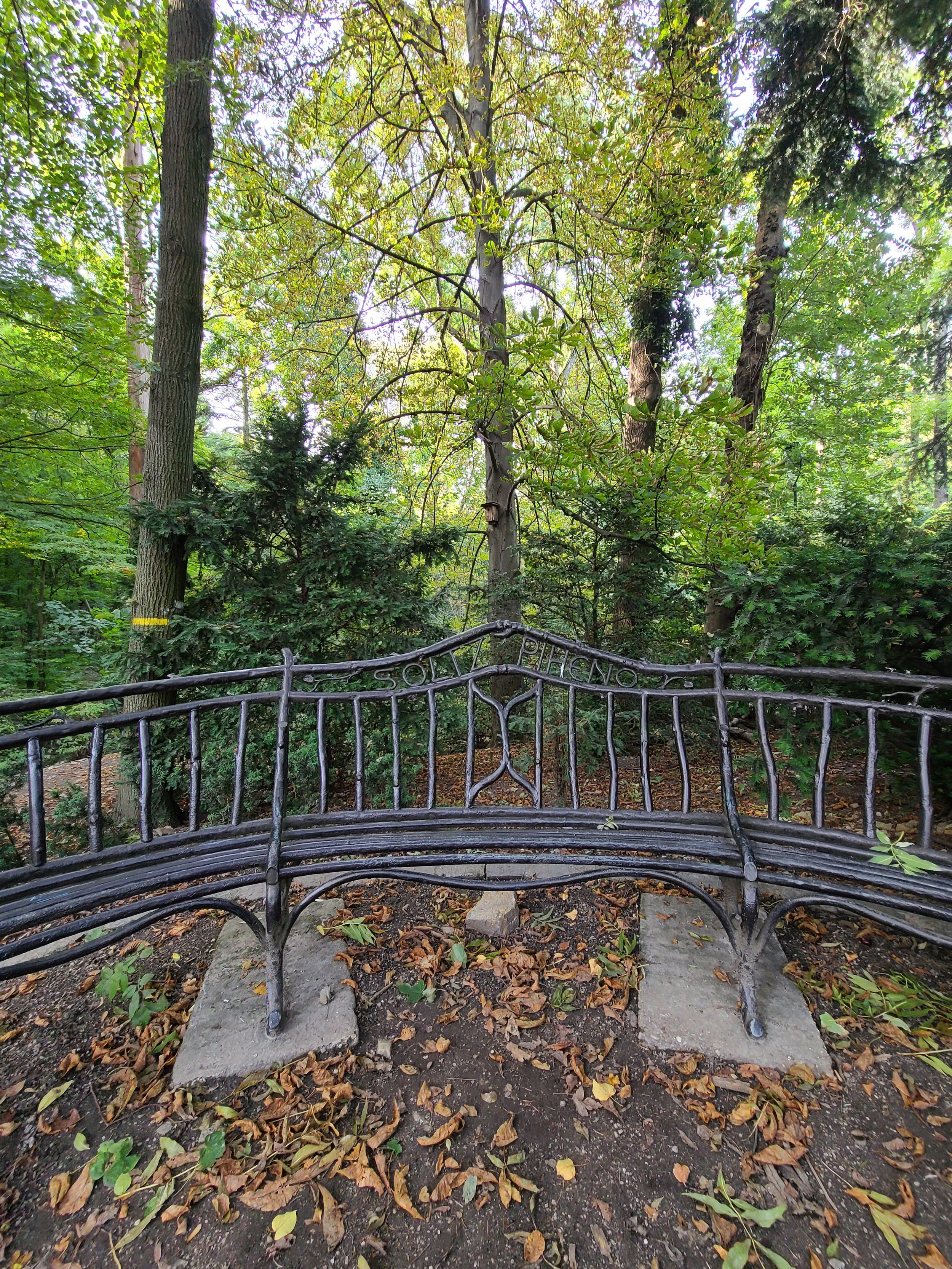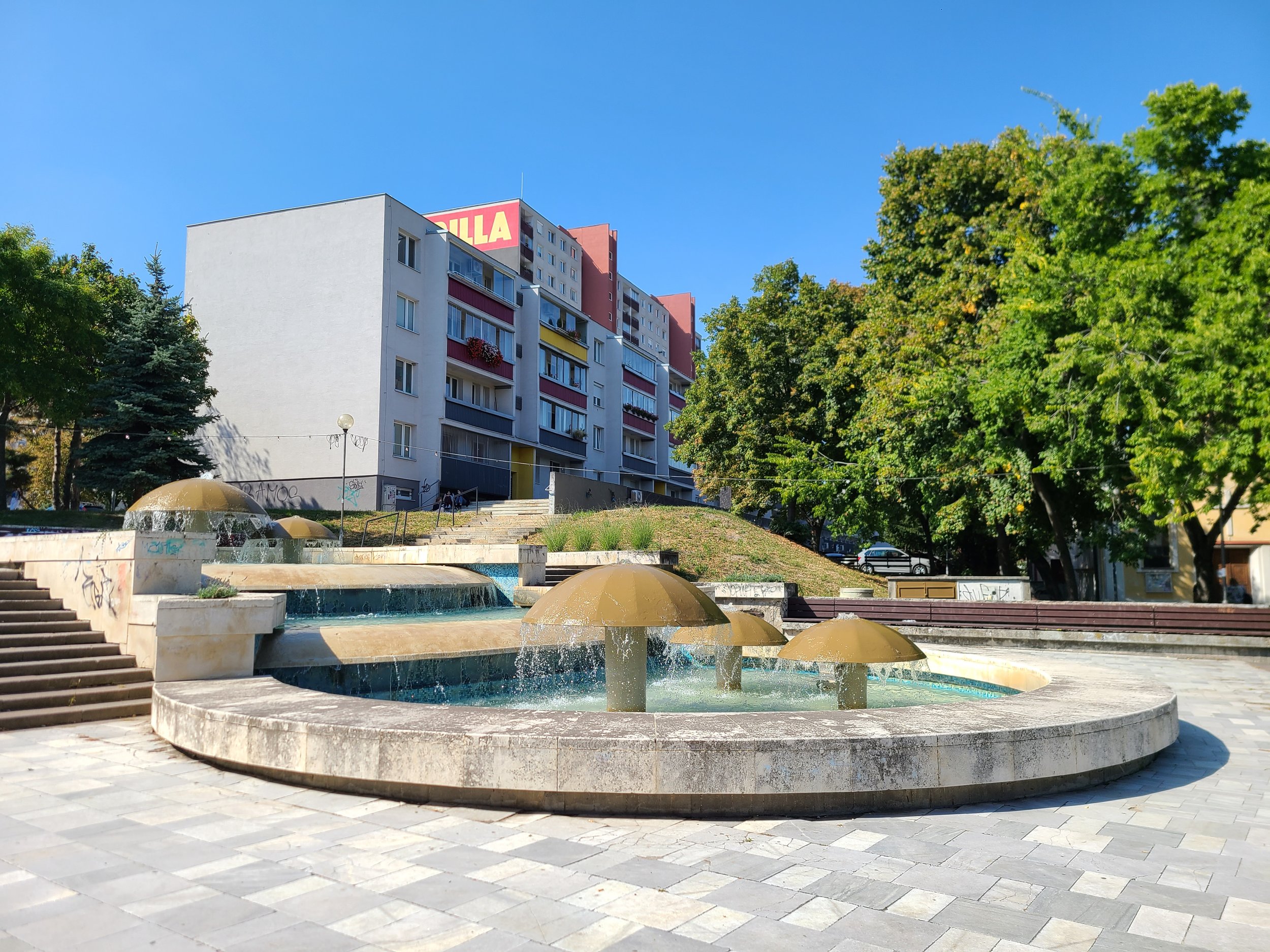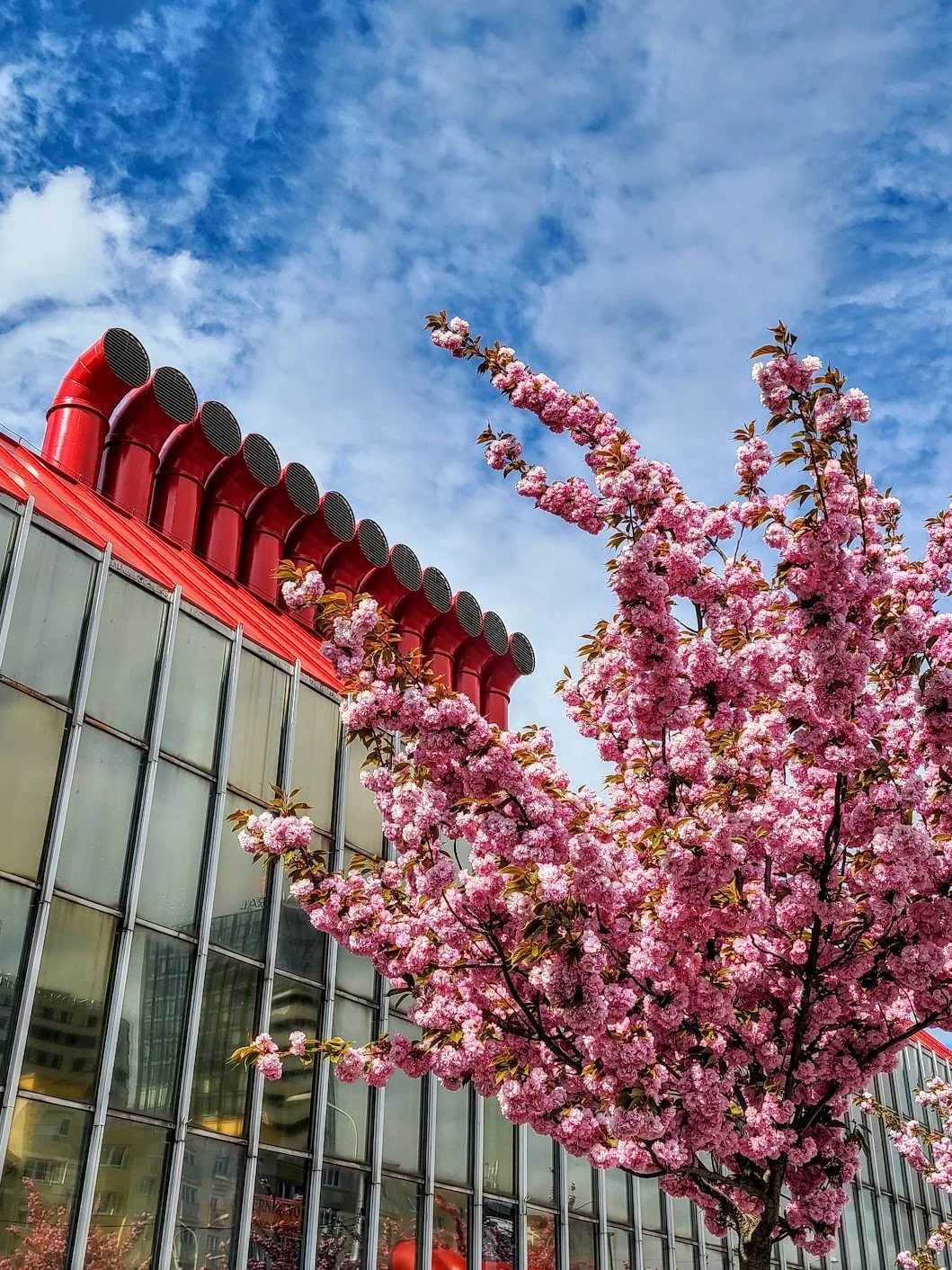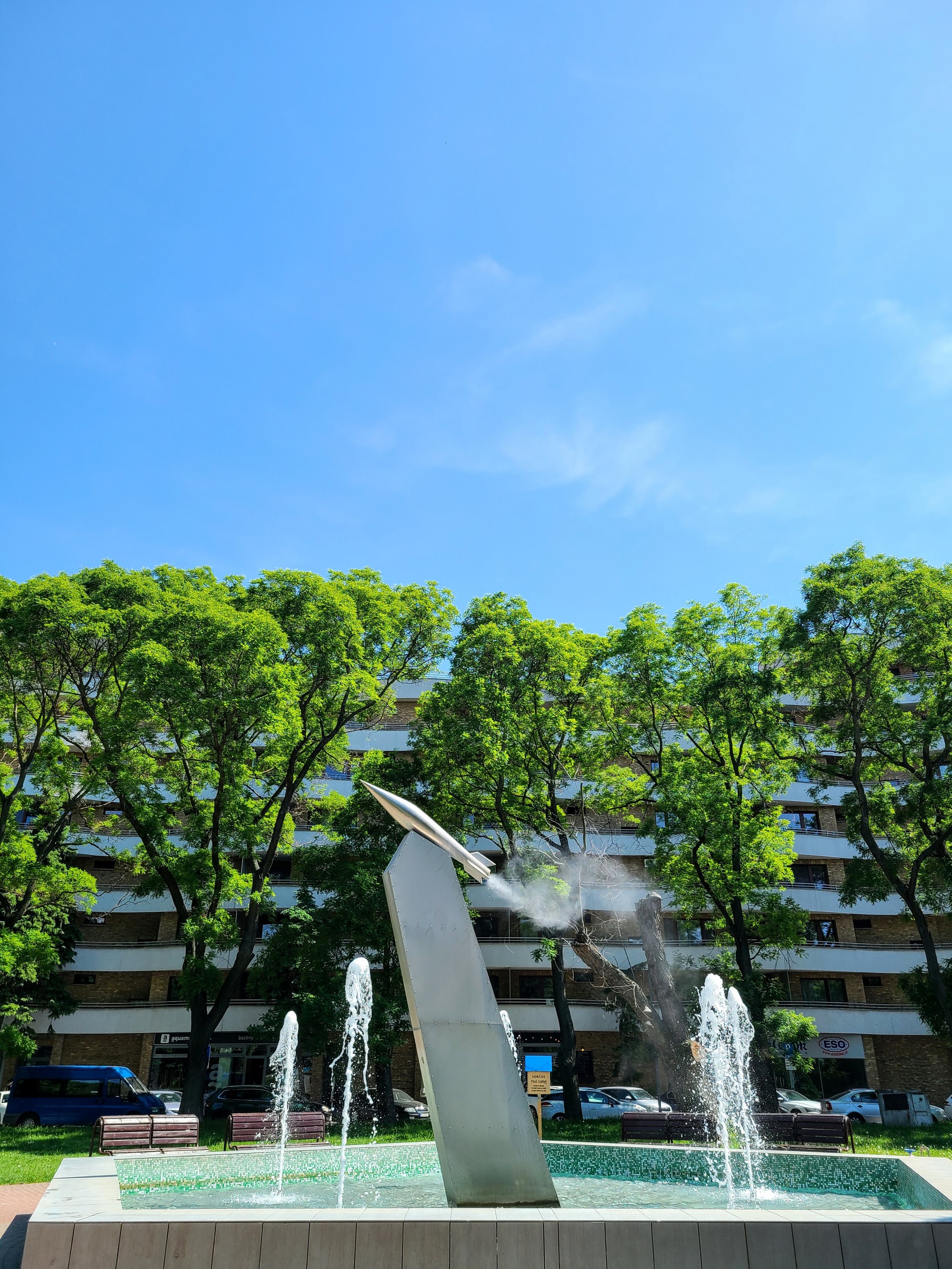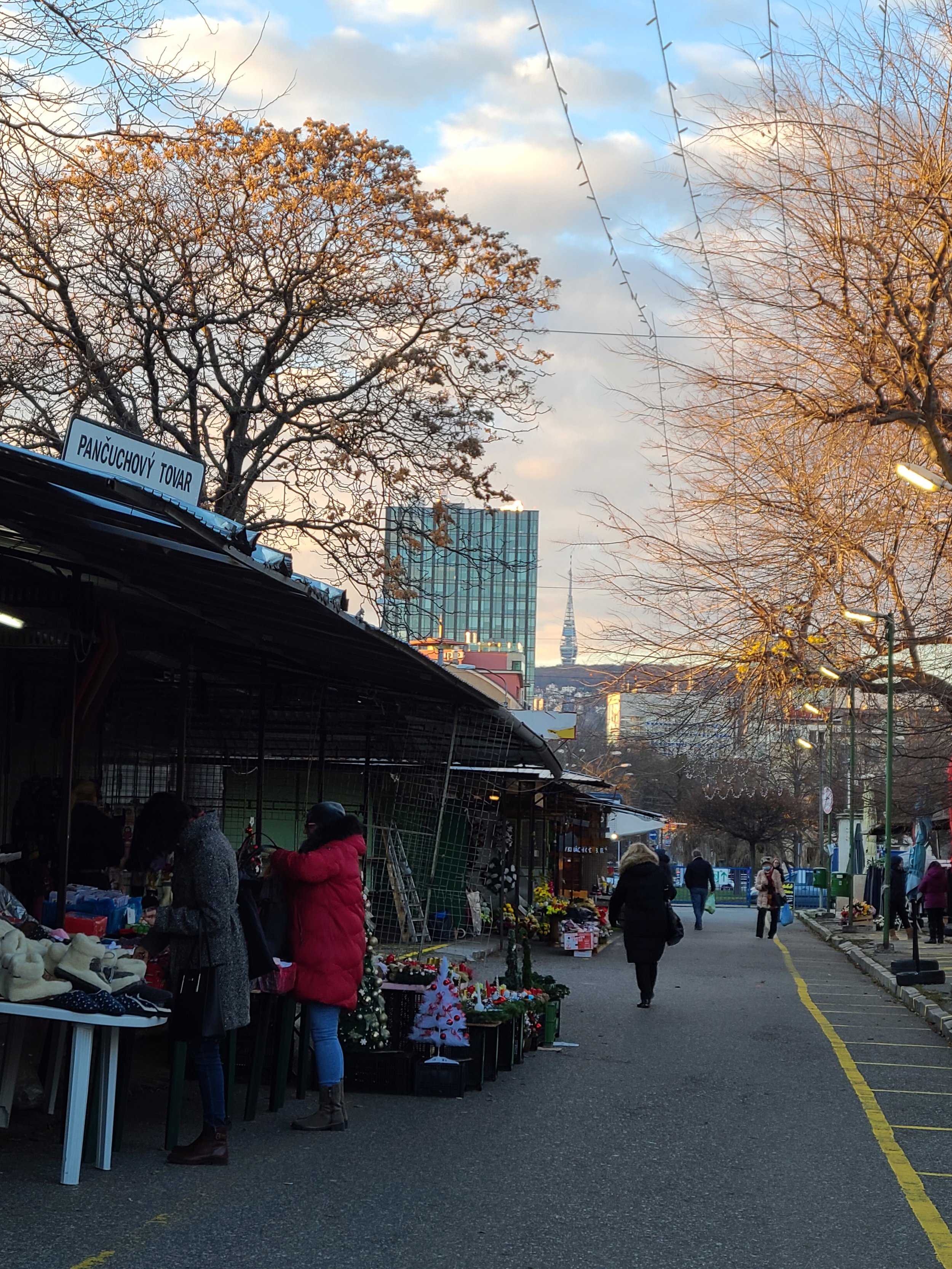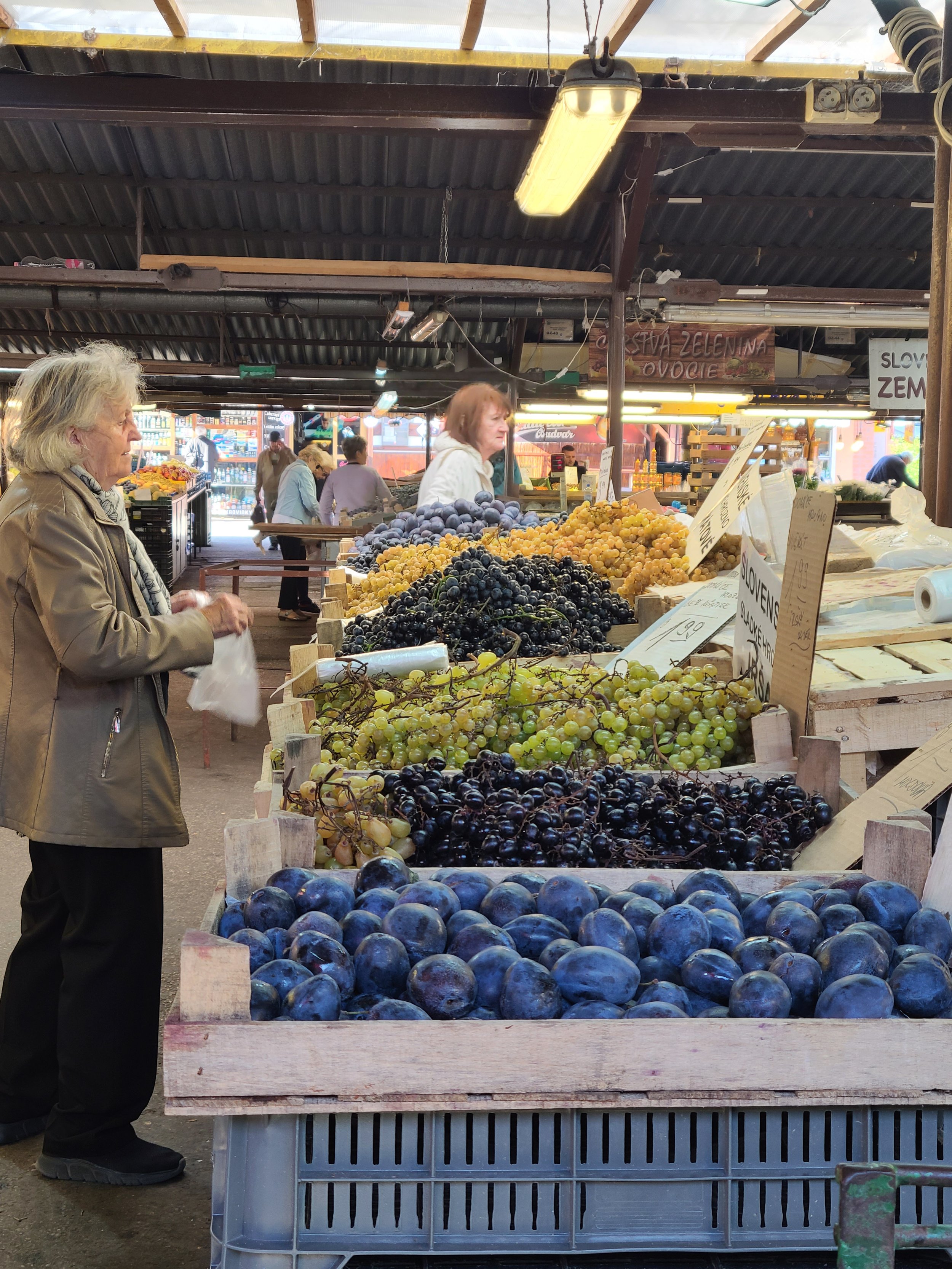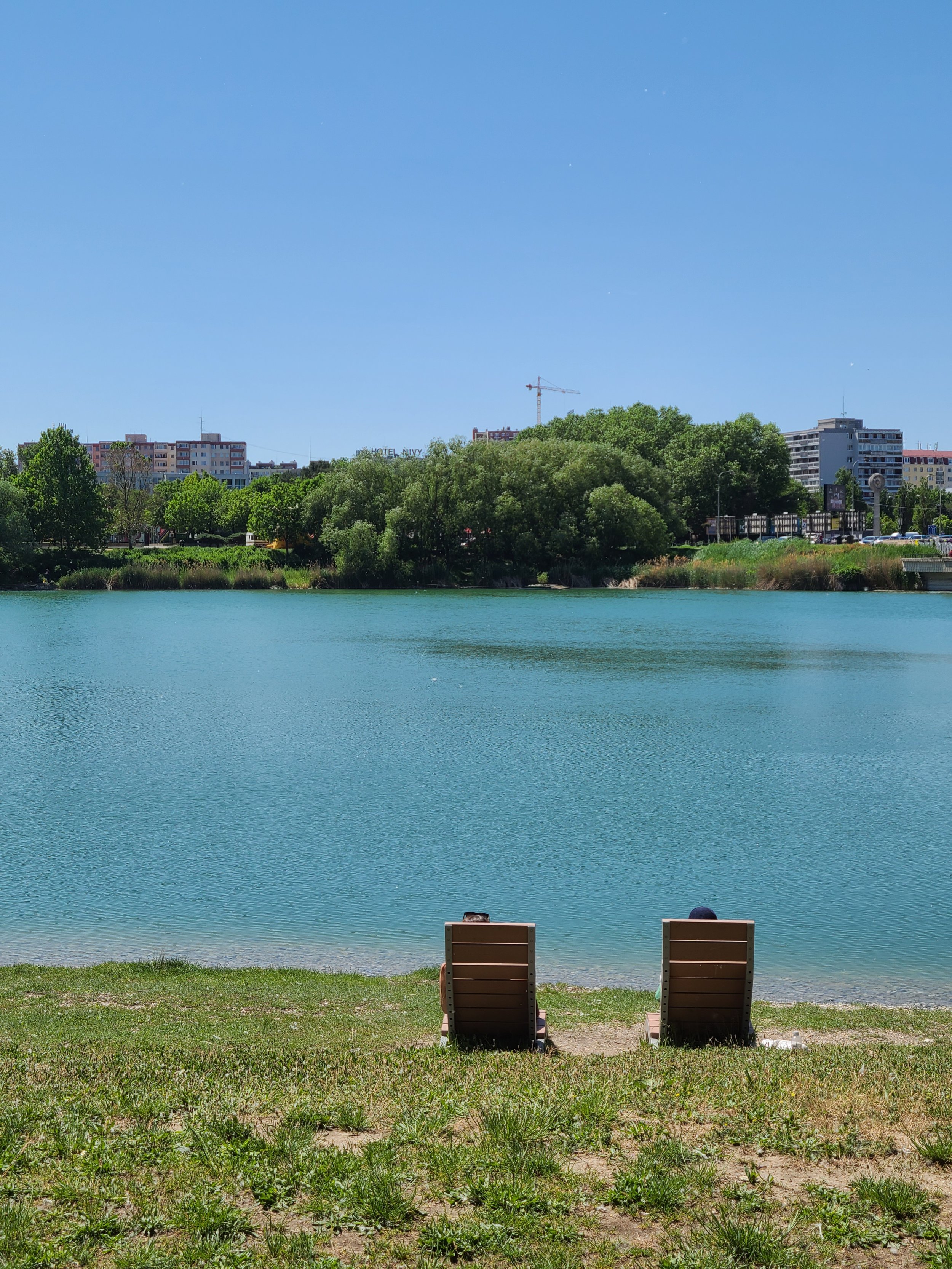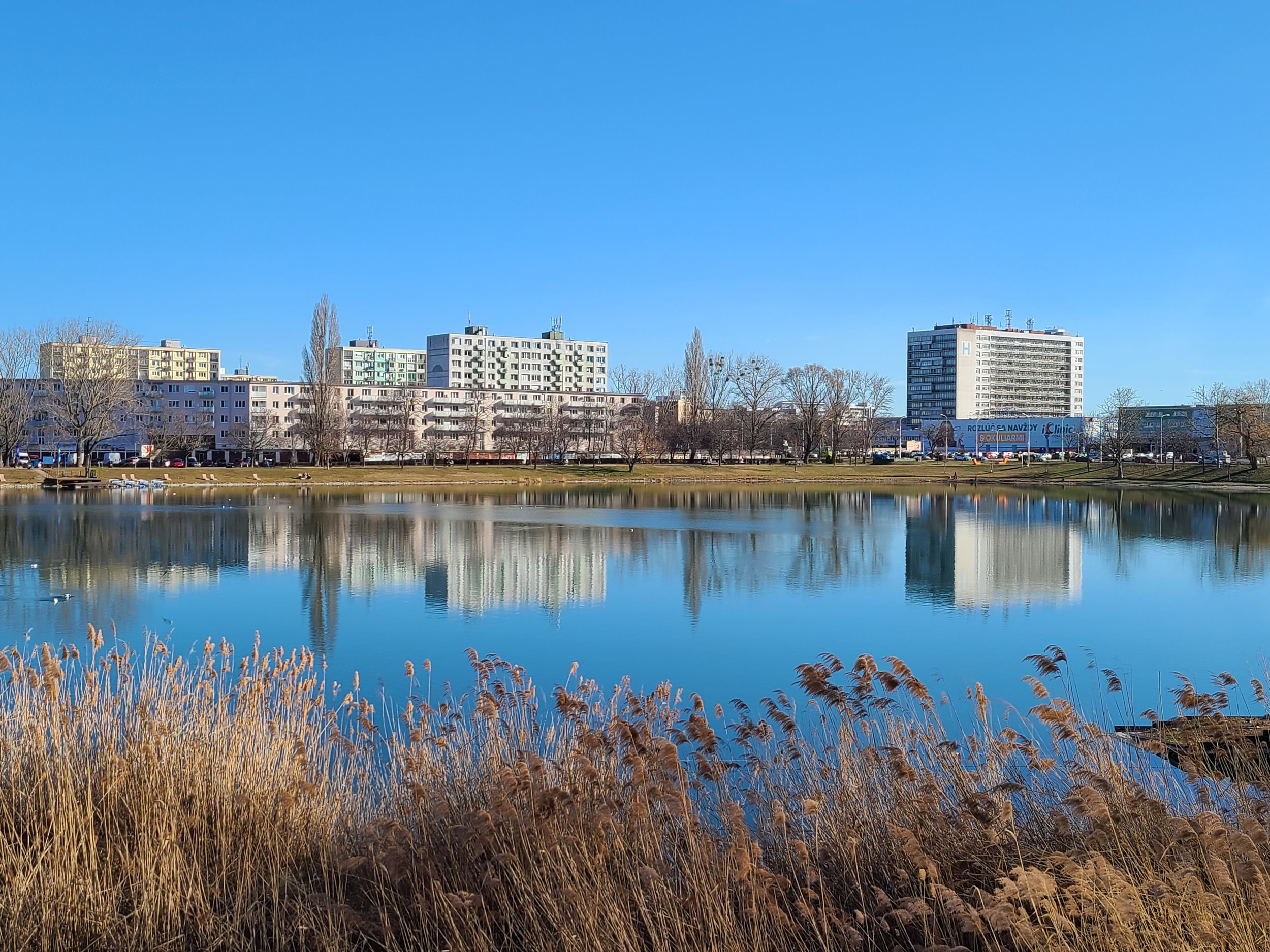Uncovering the Hidden Gems of Bratislava
Bratislava is often considered to be a hidden gem itself. It receives a surprisingly small amount of tourists in comparison to its larger counterparts like Vienna and Budapest. But this charming city on the banks of the Danube has a lot to offer!
It's steeped in history, with a well-preserved old town that dates back to the Middle Ages. Home to a diverse range of architecture, from Gothic churches and Art Nouveau buildings to Socialist relics of a communist past.
And did you know that Bratislava is the only national capital that borders two other countries? It's true! The city is nestled between Austria and Hungary, making it a perfect spot for a day trip.
After living in Bratislava for nearly two years, I can confidently say that if you have more than one day in Bratislava, there’s so much more to discover beyond the typical tourist hotspots. In this guide, we are going to uncover 19 off-the-beaten-path things to do in Bratislava.
From hidden gems to lesser-known attractions, these are sure to make your trip to Bratislava one to remember! So come along and let's start exploring the curiosities behind this wonderful city!
Hidden Bratislava In a Nutshell
Looking for some hidden gems and off-the-beaten path things to do in Bratislava? I’ve got you covered.
🗺 Top Things to Do:
1. Take a Cable Car Into the Slovak Mountains.
2. Visit the Old Soviet Fountains.
3. Tour the Communist Sights in an Old Skoda.
🛌 Top Hotels in Bratislava:
1. Chors Capsule Hotel (Boutique, Budget)
2. Aplend City Hotel Perugia (Stylish, Mid-Range)
3. Marrol’s Boutique Hotel (Historic, Upscale)
💌 Bratislava Tips from a Local:
1. Eat at a local “jedalen” — these cafeteria-style restaurants can be found throughout the city.
2. People might not speak English (especially in the suburbs), so have Google Translate ready if you get lost.
3. Get your public transport tickets on the IDS BK app, it’s cheaper than buying a ticket from the station or machine.
1. Cannonball in the Old Town Hall
The Old Town Hall is definitely worth a visit, not just for its stunning architecture and rich history, but also for the unexpected surprise of the cannonball that's lodged in its facade. This unique feature is a reminder of the city's past when Bratislava (then known as Pressburg) was under siege by Napoleon in 1809.
This cannonball isn't the only reminder of the past in the Old Town — many of the historic houses in the area still have cannonballs embedded in their walls. This was allegedly done as a way to identify which buildings were entitled to tax relief. Keep an eye out for another one on the Apponyi Palace and the house at Michalska 6, just down the street from the Old Town Hall.
So, next time you're visiting the Old Town Hall, don't just admire the beautiful architecture, look for the cannonball too, it's an interesting story and an unusual thing to see in Bratislava. The building also houses a permanent museum exhibition of Bratislava’s history, so you can learn more about the city’s past and culture.
If you’re a first-time visitor to Bratislava, consider booking a spot on this 1-hour small-group walking tour with a local guide, who will bring you to the city’s main attractions, shed light on the comprehensive history, and surely point out some more hidden gems!
2. Heydukova Street Synagogue
Tucked away on a residential street downtown, you can visit Heydukova Street Synagogue, the only functioning Synagogue in Bratislava. It was built in 1923 by a talented local architect Artur Szalatnai-Slatinský and features a unique Cubist design — complete with a seven-pillared colonnade.
While the synagogue still functions as a religious place of worship, in the summer months it’s home to the Bratislava Jewish Community Museum, which you can visit in the summer months. If you’re interested in visiting more Jewish monuments in the city, check out the official map of them here.
You can find the Heydukova Street Synagogue a few blocks away from the historic old town, on Heydukova Street, between Obchodna and Kammene Namestie.
3. Massive Celtic Coin in Downtown
If you're interested in history and ancient artifacts, then you'll want to check out the Celtic Coin Monument in downtown Bratislava.
It was erected in 1988 by sculptress Ludmila Cvengrošov to commemorate the rare ancient Biatec coins that circulated among the Celtic tribe around 60-40 B.C. in what is present-day Bratislava.
The name "Biatec" appears on the coin, and while it's unclear who Biatec was, it's likely the name of the leader of the tribe. The coins were all slightly different, but usually showed a horseman or animal, both mythological and real, with an inscription in Latin letters.
Although these coins are a bit obscure outside of Bratislava, they have become well-known among locals. From 1993 to 2008, its design was featured on the 5-koruna coin (the old Slovakian currency), and even today, the horseman can be seen on the logo of the National Bank of Slovakia.
The Biatec Coin Monument is more than a hundred times larger than its real-life counterpart and can be found in front of the National Bank of Slovakia, across the street from the famous Radio Building — which I talk more about in Bratislava Unveiled: A Local’s Guide to the City.
4. Hidden Statue of a Creepy Old Man
Nestled in the heart of Bratislava's Old Town, you'll find a unique and intriguing stone monument that's sure to catch your attention. Known as "Posmievacik" in Slovak, which translates to mockingjay, this statue depicts a man with oversized… genitals, perched above the facade of an ice cream shop (one of the oldest in the city).
While the exact origins of this unusual statue are unknown, many believe it was made to mock the former owner of the building, who would spy on the people below from his bay window. Others claim it was a playful jab at a drunkard who failed in his attempts to court his neighbor's wife.
Regardless of how it got there, Posmievacik is now a fascinating piece of history and a must-see for anyone visiting Bratislava. So, keep an eye out for this hidden gem as you explore the city's Old Town — you can find it on Panska Street near St. Martin’s Cathedral.
5. Memorial Stones for Those Killed by the Nazis
One of the most striking and thought-provokingly unusual things to see in Bratislava is the "Pamätné Kamene", which translates to "Memorial Stones." This project was started in 1992 and aims to commemorate individuals who were victims of Nazi terror during the war.
Small brass plaques engraved with the names and life information of those who were killed by Nazis are placed at their last place of residency or, in some instances, their place of work. The first Pamätné Kamene were placed in Slovakia in 2012 and now there are 16 of them throughout the city. Chances are you’ll see several of them while walking around the Old Town.
It’s worth noting that the stones are a bit controversial. While the city claims they serve as a reminder of the importance of different cultures living together peacefully, many Jewish leaders believe it’s offensive to have the plaques located in a place where people step over them.
So, if you're visiting Bratislava, be sure to keep an eye out for these memorial stones as you explore the city — you may find them in other cities across Europe too!
6. Horský Park
Horsky Park is a beautiful park that offers a serene escape from downtown. In it, you’ll find plenty of winding walking paths and greenery that have been preserved for centuries. It’s a popular spot for locals on the weekends.
At the main entrance of the park, you’ll find “Horan”, a 130-year-old gamekeeper’s house, which houses a little cafe and some farm animals in the back (including a really hairy pig). Across from the house, you can find the Horsky Park Outdoor Gallery, which is dedicated to modern abstract art designed by locals (it’s free to walk around).
Just a few steps from here, you can find one of the park’s highlights: Solc’s bench. This bench has sat in the same spot for over 100 years. It was built in an Art Nouveau style — the steel tubes are supposed to represent tree branches.
Whether you're looking for a relaxing stroll, a cappuccino beside a pig, or some cultural enrichment, Horsky Park has something to offer everyone! You can get to Horsky Park on foot (it’s about 10 minutes from the Slavin Memorial, but quite an uphill walk) or by bus.
7. Koliba (Soviet-Era Cable Car + TV Tower)
If you're looking for a unique experience in Bratislava, be sure to check out Koliba, which is a hill overlooking the city. It’s home to both the Kamzík TV Tower and the Zelezná Studnicka cable car.
The Kamzík TV Tower is perched on the peak of the ridge and offers stunning panoramic views of the surrounding area, both from the revolving restaurant and observation deck — which is almost 200 meters above sea level. On a clear day, you may even be able to see Austria, Hungary, and the Czech Republic.
But perhaps the most unusual thing to do in this forest is hitch a ride on the Soviet-era cable car that runs between Kamzík and Zelezná Studnicka. It's a great way to see the city from a different perspective and is definitely worth checking out. I used to ride on this very same cable car as a kid while visiting my family in the summer and it’s safe to say that not much has changed since.
The cable car is inexpensive and takes 8 minutes one way. You can pick up a round-trip ticket or opt for one way if you’d like to explore another part of the forest, Zelezná Studnicka. You can also take bus 212 back to the Grassalovich Palace downtown from here.
8. Mushroom Fountain
There is no shortage of socialist fountains scattered throughout Bratislava. From the late 1940s to the 1980s (the socialist era), the overall aesthetic of the city was dictated by the state. Many public spaces, murals, reliefs, and fountains were created to illustrate the positive aspects of socialism. The materials used for these things were usually simple and economical.
The Mushroom Fountain “Rodina Hriby” is one of the socialist fountains and it’s certainly off the beaten path. The fountain, originally built in 1980, depicts a family of five mushrooms. It’s lit up at night, which really brings a different atmosphere to the square. If you’re visiting on a summer night, you might even catch a local salsa event!
To get to the Mushroom Fountain, you can take Tram #9 from the Old Town to Karlova Ves.
9. Waterworks Museum
The Waterworks Museum is one of the most unique free things to do in Bratislava — especially for those interested in technology and history. It was founded in 2007 and is located on the site of Bratislava’s first pumping station from 1886. This is where the city’s drinking water was sourced from, as it naturally filtered from the Danube.
The Bratislava waterworks were designed as a pressure-gravity system and were the first of their kind in Slovakia. It still functions as a pumping station, but visitors are welcome to tour the museum and learn about the history of the water supply system or take a relaxing walk through the gardens, which have won numerous awards.
It’s located in Karlova Ves and can easily be combined with a visit to the Mushroom Fountain. Take tram #9 from the old town.
10. Villa Rustica
Villa Rustica is certainly one of the more off-the-beaten-path attractions in Bratislava, which is a shame because it’s a historical hidden gem that offers a unique glimpse into the past.
The site contains the ruins of a country house dating back to the Roman Empire. It was discovered by archaeologists in 1982 and is a rarity not only in Slovakia but in the entire former Kingdom of Hungary. You can see the foundations of a Roman bath and a few circular buildings, both from the third century. The grounds are free to walk around and contain some informative signs, but they are only in Slovak.
This is a must-see for anyone interested in archaeology. Villa Rustica is located in Dubravka, which is a suburb of Bratislava, and can be reached by tram or bus. It will involve a bit of walking but nothing too difficult — just follow the green signs.
If you get hungry, there happens to be a great (and somewhat random) ramen restaurant just a few minutes from here called Shugetsu. Roman ruins and ramen, now that makes for an unusual thing to do in Bratislava.
11. Nová Trznica
While Nova Trznica translates to “New Market", it feels quite the opposite! This market opened in 1983 and visiting it feels like you’ve been transported back in time. It’s a unique example of late modernist architecture and was designed by a famous Slovak architect, Ivan Matusik.
The market offers a wide range of products, including local produce, delicious Slovak dairy products (try the sheep’s cheese), and freshly baked goods — which are all made in-house or grown by the vendors themselves. You can also find some little shops offering things like shoe repairs, tailoring, or homemade wine (it’s incredibly cheap too). On the rooftop, there’s an apiary and beehives, which are used to produce honey that’s also sold in the market.
You won’t find many tourists here but it’s worth taking the tram out of the Old Town to visit this hidden gem. It’s located beside a major transport hub called “Trnavske Myto” and is very easy to reach from all corners of the city.
12. Rocket Ship Fountain
Another socialist fountain (and a relic of the Soviet Space Race) can be found in a small residential greenspace called Kukorelliho Park — it’s the rocket ship fountain! In the summer, the fountain lights up and blows out smoke. It makes for quite an interesting sight.
The park was named after Ludovít Kukorelli, a Slovak air force officer who fought in World War II. In addition to the fountain, you can also see a statue of Kukorelli, a free little library, and a bug hotel — all of which are maintained by the local residents. Across the street, you can find Wagner Cukráren, a confectionary with roots dating back to 1946. Enjoy a slice of cake or ice cream with a view of the fountain.
Kukorelliho Park is located about a 10-minute walk from the main bus station and can easily be reached by public transportation.
13. Czechoslovakia’s First Panelak
If you’re a history buff, be sure to check out the oldest “panelak” — the Slovak term for pre-fabricated apartment blocks (from the communist era) in Czechoslovakia.
This 6-story panelak was built in 1955 and still serves as a home for residents today. It was constructed in just three months and features 36 two-room apartments. Above the entrances to the building, there are wall-mounted sculptures reflecting the communist time period in Slovakia. You can also find a small board on the facade of the house that provides information about the architect and construction period.
At first glance, it doesn’t seem like the oldest block in Czechoslovakia because it’s so well-maintained. But it’s very interesting to think that at the time, this was an innovation and stimulated the construction of the largest panel housing estate in Central Europe — which can also be found in Bratislava, in the suburb of Petrzalka.
You can find at 5-6 Kmetovo Námestie, less than a 10-minute walk from the famous Radio Building in the shape of an upside pyramid, a sight that I write more about in Bratislava Unveiled: A Local’s Guide to the City. Both the Radio Building and this apartment block are stops on the Soviet Era and Post-Communist tour of Bratislava, which I highly recommend for first-time visitors to the city.
14. Fountain of Love
The Fountain of Love, also known as the "Fountain for Suzanne," is certainly one of the more off-the-beaten-path things to do in Bratislava. It was built in 1986 as the central setting for a Slovak movie by the name “Fontána pre Zuzanu” but unfortunately, the fountain quickly fell into obscurity after filming was completed.
In 2008, the fountain was reconstructed and made functional for the first time. It has since become a symbol of local patriotism for many Slovaks who are proud of the love story it represents. Come here for a touch of nostalgia and a glimpse into the city's cinematic history. You can find the fountain in a residential courtyard on Kupeckého Street in Ružinov, in between the Rocket Ship Fountain and Mileticova Market.
15. Mileticova Market
Mileticova Market, also known as Mileticka, is a must-visit for tourists looking for a unique and authentic experience in Bratislava. It’s the largest outdoor market in Bratislava, offering up a variety of market stalls, street food, hole-in-the-wall restaurants, beer pubs, and cheap stores offering the latest Asian imports. It’s a melting pot of cultures yet still maintains a typical Socialist-era atmosphere.
Having lived right beside Mileticka, I often came here to pick up things like local produce, flowers, baked goods, and more. It’s a great place to come for lunch or just to enjoy the atmosphere and watch the locals go about their business. Some must-try places in the market include:
Komín - Brewery housed in an old slaughterhouse from the 1800s. Delicious beer and hearty Slovak pub food.
Phong Nam - The most popular Vietnamese restaurant in Bratislava — it’s been around for over 25 years! Huge portions and a variety of dishes (although the menu can be a bit confusing).
Langose - A little wooden hut offering up fresh langos, schnitzel, and homemade cream cake at reasonable prices.
DJazz Falafel - Ukrainian-Jewish falafel joint with super fresh hummus (sometimes I come here just to buy it for my own use), falafel wraps, and pierogies filled with meat or cheese.
Smädnícek - Old-school cafeteria-style restaurant offering up daily lunch specials for fair prices.
Ryba Mileticka - A little deli offering up just one Slovak specialty: cold fish salad, served with fresh bread rolls. Although I’m not a fan, this is an absolute classic and it’s loved by locals.
You can get to Mileticova Market by bus or tram — just search for the stop Trhovisko on the IDS BK app. Try coming on a Friday morning (that’s when the majority of the stalls are open) for the best experience.
16. Lake Strkovec
Lake Strkovec is a man-made lake in Ruzniov that dates back to the 1950s when it was used for gravel mining to build the surrounding apartment blocks. Today, it serves as a popular relaxation spot for locals — you can find them sunbathing on the beach, enjoying a coffee on the dock, or taking out one of the pedal boats on the water.
It’s quite popular amongst families as it has one of the largest playgrounds in Bratislava and one of the only minigolf courses in the region (it’s definitely the only one I’ve seen in Slovakia). It also has a brand-new clay running track that goes around the entire lake and a small outdoor workout area.
The lake is particularly nice around sunset, where you can see the contrast of the water against the buildings and rolling hills in the distance. If you want to experience a different (more local) part of Bratislava, consider taking the tram to the lake for a quick walk!
17. Andreja Hlinku Park
Located just one tram stop away from Lake Strkovec, you’ll find another local hangout: Andrej Hlinku Park. The park was designed to complement the surrounding apartment blocks and give the residents an outdoor green space to enjoy.
The best part of the park is the socialist fountains. You can find one fan-shaped fountain at the entrance of the park, behind the ice cream shop — a must-visit during the summer months (my favourite flavours are Green Apple or Cookies). Towards the middle of the park, you can see the veil fountain. It’s pretty hard to miss! At night, the fountain lights up and makes for a special sight.
Throughout the year, the park hosts a number of cultural events, so don’t be surprised to find food trucks or a small Christmas market, depending on the time of year. If you’re hungry, consider walking a bit further to Pivaren Laguna, my favourite spot for chicken wings in Bratislava.
18. Flying Saucer in the Suburbs
Bratislava is home to a number of space-themed attractions (likely due to the Soviet space race propaganda), and one of them is the Flying Saucer in Medzijarky Park.
This 15-foot tall UFO was erected in the 1970s when the area was first being developed as a housing settlement. The sculpture was created by local artist Juraj Hovorka, who actually lived in one of the housing towers.
Once communism fell, the housing settlement fell into disrepair and the city wanted to take the sculpture down. But the local residents stood in defense of their beloved spaceship and lobbied successfully to keep it.
You can come to visit the flying saucer in Medzijarky Park, which is located in a neighborhood called Vrakuna about 6km from the city center. It’s easily accessible by bus, just check the schedules on Google or the IDS BK app.
19. Old Military Bunkers Along the Border
If you're looking for a glimpse into Bratislava's past, head to the Slovak border in Petržalka, where you'll find a string of concrete bunkers scattered across fields and woods. This excursion certainly makes for one of the most off-the-beaten-path or unusual things to do in Bratislava.
These bunkers are the best-preserved remnants of an expansive border defense system that was constructed in the 1930s to defend against invasion by Nazi Germany. At the time of building, the bunkers were state-of-the-art but ultimately proved of little use and were eventually occupied by Nazi control.
There are 14 surviving bunkers along the stretch of border. The largest and best-preserved is BS-8, which is maintained as a museum by a team of dedicated volunteers, who sometimes give tours inside the bunker. You can check out their website here. BS-8 is the easiest bunker to get to and it’s a good starting point to check out some of the other smaller bunkers like BS-9, and BS-7 which can be found nearby.
These bunkers are located in a neighborhood called Petrzalka, across the Danube from the main part of the city. To get to BS-8 from the old town, take bus #80 from Zochova to Kopcianska and continue on foot. If you’re interested in exploring more sites from Bratislava’s communist past, I highly recommend booking this Soviet Era tour, which includes a stop at these bunkers.
Your Questions on Hidden Gems in Bratislava, Answered.
Is Bratislava worth a stop?
Yes, Bratislava is definitely worth a stop, especially if you're traveling between Vienna and Budapest. It offers a unique blend of history, culture, and scenic beauty, all packed into a walkable city center. It's a great place to experience Slovak hospitality without the crowds of larger European cities.
Is 1 day enough to see Bratislava?
One day is enough to see the highlights of Bratislava but if you want to get off the beaten path and explore some of the lesser-known sights, like the Soviet fountains or Koliba cable car, a single day won’t cut it.
Is there anything to see in Bratislava?
Absolutely, Bratislava has a variety of attractions to suit different interests. You can check out my list of the 22 best things to do in Bratislava here, in addition to the hidden gems of Bratislava mentioned in this post.
How much is a meal in Bratislava?
The cost of a meal in Bratislava can vary depending on where you dine. In your average restaurant, a meal for one person might cost around €10-€20, including a drink. Fast food and street food options are cheaper, often under €10.
Is the water in Bratislava drinkable?
Yes, the tap water in Bratislava is generally safe to drink and meets EU standards for water quality. However, Slovakia is home to a number of flavored sparkling waters, so you may want to buy a bottle at a local grocery store. Also, water is not free in restaurants and beer is often cheaper.
What movie was based in Bratislava?
The movie “Hostel” (2005) is set in Bratislava but there’s no need to worry — as someone who has seen the movie and lived in Bratislava for over 2 years, I can confidently say that it doesn’t offer an accurate representation of the city or its culture.
Is it safe to walk at night in Bratislava?
Bratislava is definitely safe to walk at night, especially in well-lit and populated areas like the Old Town. However, like any city, it's always a good idea to stay aware of your surroundings.
What is the national drink of Bratislava?
While Bratislava doesn't have a "national drink" per se, Slovakia's traditional spirit is Borovička, a juniper brandy. There’s also Kofola — a Coca-Cola knock-off. Originating during the Communist era as an alternative to Western soda, Kofola is a national treasure and is widely available in restaurants and stores across Bratislava.
What is the old name for Bratislava?
The city was historically known as “Pressburg” in German and “Pozsony” in Hungarian. The name "Bratislava" was officially adopted in 1919, following the collapse of the Austro-Hungarian Empire and the formation of Czechoslovakia.
Was Bratislava bombed in WW2?
Yes, Bratislava was bombed during World War II, particularly in 1944 and 1945, as part of the Allied bombing campaign. The city suffered damage to infrastructure and loss of life, but many historical buildings, including Bratislava Castle, remained largely intact.
Resources to Plan Your Trip
In conclusion, there is no shortage of unique things to do in Bratislava beyond the classic tourist sights. From exploring ancient ruins and socialist relics to enjoying a cheap meal at the market and taking a cable car through the woods, there is something to please everyone.
To plan your trip, be sure to use the following resources:
Read the other posts in my Bratislava series, including the Bratislava Unveiled: A Local’s Guide to the City, Sipping in Style: The Best Cafes in Bratislava, and Beyond Bratislava: A Guide to the Best Day Trips.
Browse online tour companies like getyourguide.com to find travel experiences and day trips from Bratislava, or consider hiring a private guide for a more personalized experience.
Check out social media to get recommendations and insider tips from other travelers. Search for Bratislava by location or hashtags (like #visitbratislava).
Use hotel booking tools like booking.com to find accommodation in the cities you'll be visiting. You can easily find options in your budget — most come with free cancellation.
With careful planning and a sense of adventure, you can make the most of your day trip from Bratislava and create unforgettable memories.
If you have any tips or questions about day trips from Bratislava, please leave a comment below.
Thanks for reading. Happy travels!

